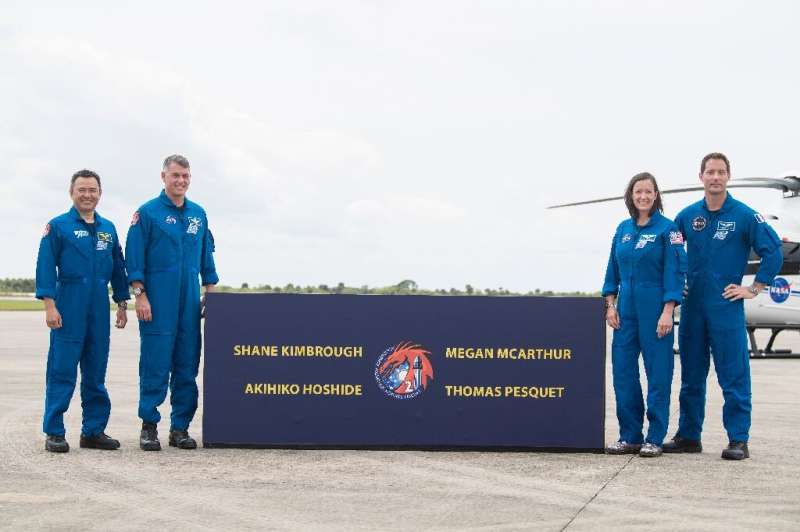All have flown to space previously.
ESA has dubbed the mission "Alpha" after the star Alpha Centauri, the closest star system to our own.
Elon Musk's SpaceX has firmly established itself as NASA's favored transportation provider as the agency waits on Boeing's troubled Starliner capsule to carry out key tests.
SpaceX's first crewed test flight in May 2020 ended nine years of American reliance on Russian rockets for rides to the ISS following the demise of the Space Shuttle program.
Thursday's flight will reuse the booster rocket used in the Crew-1 mission—a first—and the Crew Dragon capsule will be the same as that used in the test mission.
Speaking to reporters ahead of the mission, Pesquet said his participation underscored Europe's commitment to space flight.
"It means a lot for us as an agency because we've been part of the ISS program for 20 years now and we intend to be part of what's coming next," said the Frenchman, referring to future partnerships including the Artemis program to the Moon.
Crowded lodgings
Pesquet told AFP he was excited to ride in the futuristic and fully autonomous Crew Dragon, which was markedly different from the Russian Soyuz spaceship he had previously flown.
"The way it's laid out, it's just fantastic, you know all the time what's going on," he said.
"On Soyuz, it's unbelievably reliable, but you had to make sense of all that information that was... disseminated at every corner of the control panel, with digital gauges, analog gauges, and you had to make sense of this and that's why the training was much longer."
The four astronauts will overlap for a few days with the crew of Crew-1 before that team returns from its six-month mission.
With three Russians on board, the station is set to become unusually crowded, accommodating no fewer than 11 people.
Pesquet and Hoshide planned to liven up the cuisine with national dishes from their home countries.
Pesquet for his part divulged one of the meals was crepe suzette—a quintessential French dessert.
Mini brains
During their mission, the crew will be tasked with carrying out numerous scientific experiments, with Pesquet singling out one examining the effects of weightlessness on brain organoids—mini brains created using stem cell technology—as a favorite.
Scientists hope this research can eventually help space agencies prepare for distance space missions which will expose crews to the rigors of space for long periods of time, and even help fight brain disease here on Earth.
"It really sounds like science fiction to me," joked the aerospace engineer.
Another important element of the mission is upgrading the station's solar power system by installing new compact panels that roll open like a huge yoga mat.
Crew-2's launch day coincides with Earth Day, and by the time the crew returns they will have also contributed to environmental research by taking 1.5 million images of phenomena like artificial lighting at night, algal blooms, and the breakdown of Antarctic ice shelves.
Explore further
© 2021 AFP



